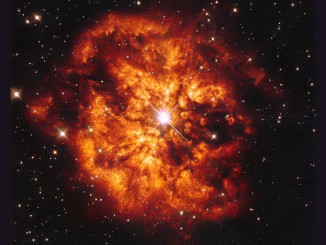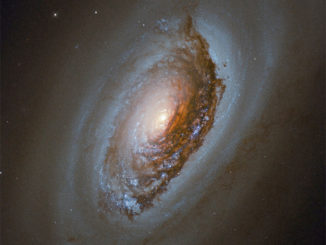M79, a globular cluster about 41,000 light years from Earth in the constellation Lepus, is a gravitationally bound group of about 150,000 stars that was discovered in 1780 by Pierre Méchain and added to Charles Messier’s famous catalog. William Herschel, using a more powerful telescope, first called it a “globular star cluster.” Globular clusters typically orbit the core of the Milky Way and can contain more than a million stars. M79 may have a more unusual history than most given its location in the opposite direction from the core. It may be a captured cluster from a dwarf galaxy in the process of merging with the Milky Way or it may have simply formed in a region with a higher density of stars. Either way, the Hubble Space Telescope provides a stunning view.




